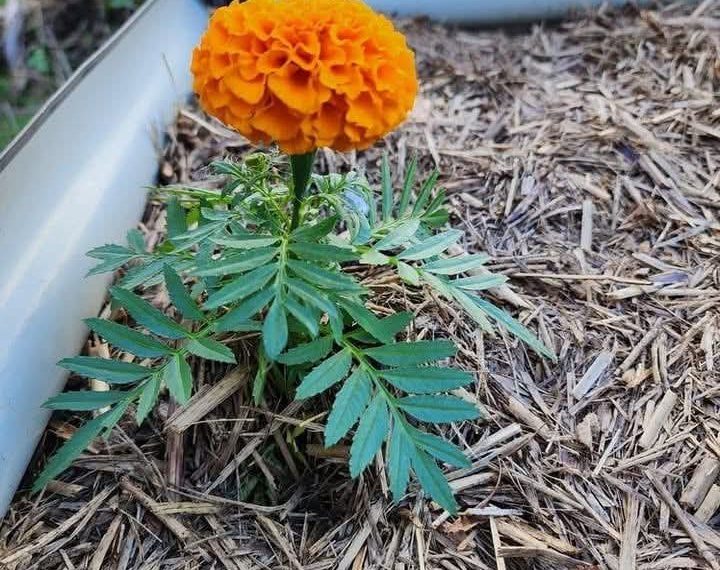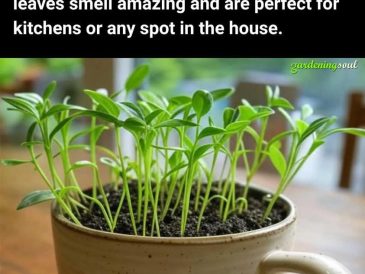Marigolds are more than just a bright, cheerful addition to your garden—they’re a powerhouse companion plant with benefits that can transform your fruit and vegetable garden. Whether you’re looking to ward off pests, attract pollinators, or improve soil health, marigolds are a gardener’s best friend. Here’s why planting marigolds is the single best thing you can do for your fruit and veg plants this year, along with tips on choosing the right types to grow.
The Benefits of Planting Marigolds in Your Garden
1. Natural Pest Control
Marigolds are famous for their ability to repel pests, making them a natural and chemical-free solution to garden woes. Their strong scent confuses and deters harmful insects such as:
- Aphids: These tiny pests can wreak havoc on vegetables, but marigolds help keep them at bay.
- Whiteflies: A common problem for tomatoes and peppers, whiteflies are discouraged by the smell of marigolds.
- Nematodes: Certain marigold varieties, like French marigolds, release compounds in the soil that kill nematodes, microscopic worms that damage plant roots.
2. Attracting Beneficial Insects
While marigolds repel harmful pests, they simultaneously attract helpful ones. Pollinators like bees and butterflies are drawn to their vibrant blooms, ensuring your fruiting plants get the pollination they need for maximum yields. Ladybugs and parasitic wasps, which prey on destructive insects, are also frequent visitors.
3. Improving Soil Health
Marigolds, particularly Tagetes patula (French marigolds), release natural compounds called thiophenes into the soil. These compounds suppress nematodes and harmful fungi, creating a healthier environment for your fruit and vegetable plants to thrive.
4. Companion Planting Synergy
Marigolds pair wonderfully with a wide range of fruits and vegetables. Here are some of the best combinations:
- Tomatoes: Marigolds repel nematodes and whiteflies, common tomato pests.
- Cucumbers: They deter cucumber beetles and squash bugs.
- Peppers: Marigolds help protect peppers from aphids and spider mites.
- Beans and Peas: They discourage Mexican bean beetles.
5. Easy Maintenance and Adaptability
Marigolds are one of the easiest flowers to grow. They thrive in a variety of soils, tolerate drought, and bloom all season long with minimal effort. This makes them an excellent choice for both beginner and experienced gardeners.
Choosing the Right Type of Marigolds
Not all marigolds are created equal. Here’s a breakdown of the three main types and their benefits:
1. French Marigolds (Tagetes patula)
- Best For: Nematode control and general pest repulsion.
- Features: Compact plants with small, colorful blooms in shades of yellow, orange, and red.
- Ideal Pairings: Tomatoes, peppers, eggplants, and beans.
2. African Marigolds (Tagetes erecta)
- Best For: Attracting pollinators and creating a bold garden display.
- Features: Larger plants with tall stems and large, pom-pom-like flowers in vibrant colors.
- Ideal Pairings: Corn, squash, and melons.
3. Signet Marigolds (Tagetes tenuifolia)
- Best For: Edible gardens, as their flowers and leaves are edible.
- Features: Delicate foliage with small, single-petaled blooms that have a mild citrusy flavor.
- Ideal Pairings: Herb gardens, leafy greens, and edible flowers.
How to Plant and Care for Marigolds
Step 1: Choose the Right Location
Marigolds thrive in full sun, so choose a spot that gets at least 6–8 hours of sunlight per day. They prefer well-draining soil but are adaptable to different soil types.
Step 2: Start from Seeds or Transplants
- Seeds: Plant seeds directly in the soil after the last frost. Sow them about 1/4 inch deep and keep the soil moist until they germinate.
- Transplants: Purchase marigold seedlings from a nursery for a faster start.
Step 3: Spacing
Space marigolds 8–18 inches apart, depending on the variety. Give them enough room to grow without overcrowding your vegetable plants.
Step 4: Watering and Fertilizing
Marigolds are drought-tolerant but benefit from regular watering, especially during dry spells. Fertilize sparingly, as too much fertilizer can lead to excessive foliage growth at the expense of flowers.
Step 5: Deadhead for Continuous Blooms
Remove spent flowers to encourage new blooms and keep the plants looking tidy.
Additional Tips for Success
- Plant marigolds as a border around your vegetable garden to create a pest-repelling barrier.
- Rotate marigolds annually to maximize their nematode-fighting effects.
- Combine with other companion plants, like basil or nasturtiums, for added pest control and biodiversity.
Conclusion
Planting marigolds in your garden is a simple yet highly effective way to boost the health and productivity of your fruit and vegetable plants. Their pest-repelling properties, pollinator-attracting power, and soil-enhancing abilities make them a must-have for any garden. Whether you opt for French, African, or signet marigolds, these vibrant blooms will not only beautify your garden but also ensure your fruits and vegetables thrive.
This year, let marigolds be your garden’s unsung hero and watch your yields flourish like never before!





